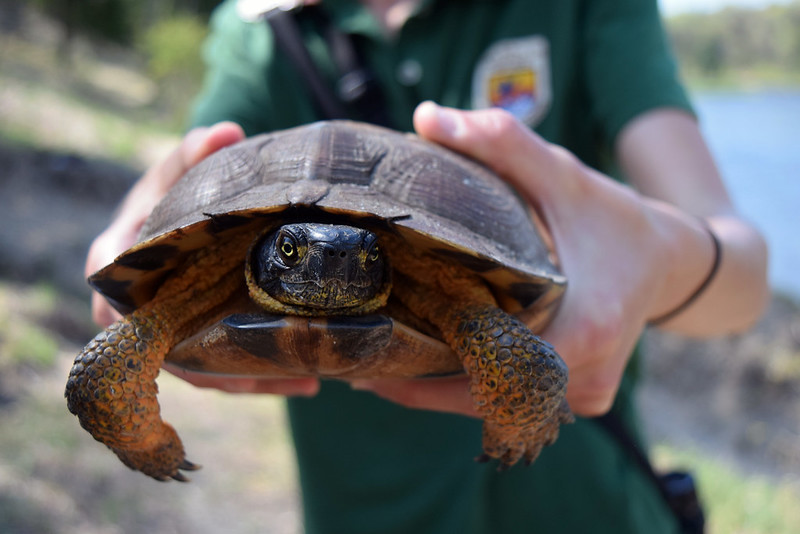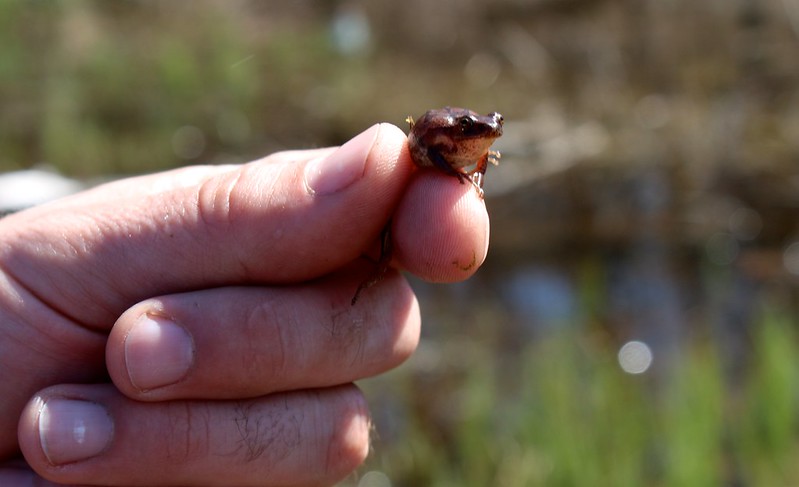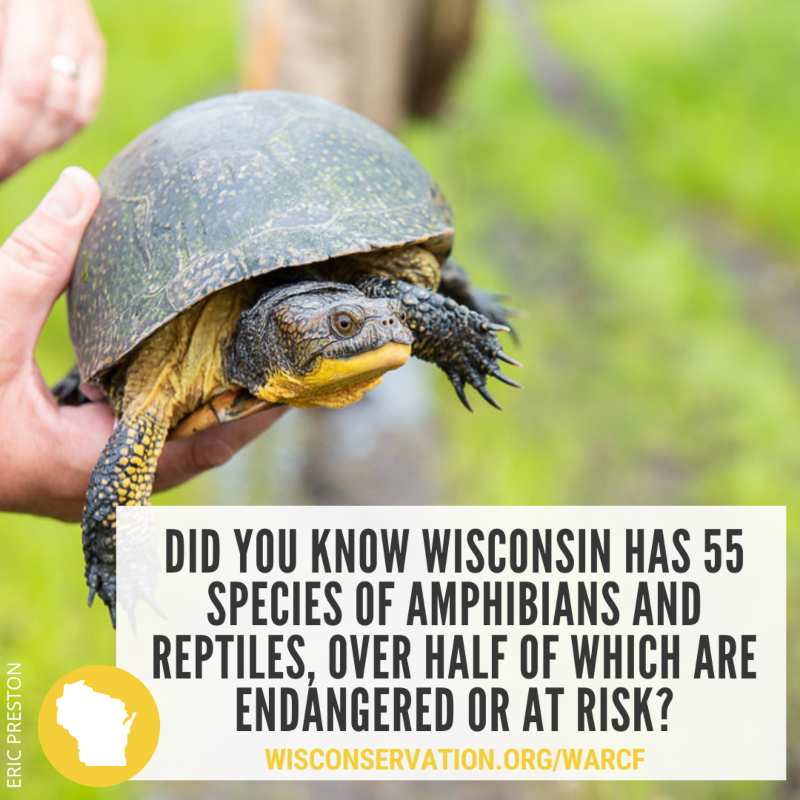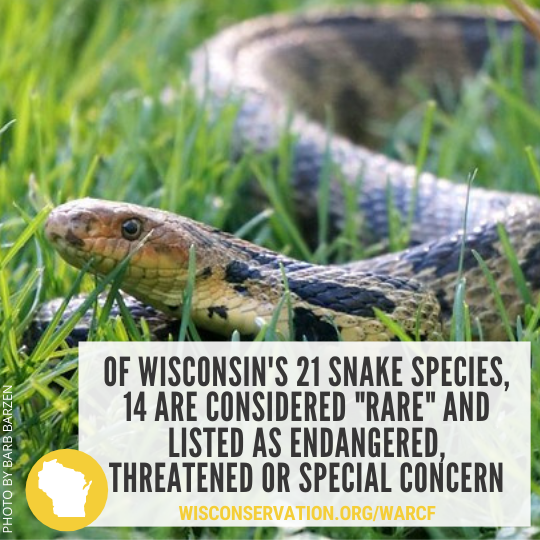Did you know Wisconsin has 55 species of amphibians and reptiles, half of which are endangered or at risk? They don’t always get the same attention as other imperiled wildlife, but it’s hard to imagine a world without them.
In the springtime, they fill our ponds and marshes with a chorus of song, from spring peepers chirping to the trumpeting call of bullfrogs. They help keep our insect and small mammal populations in check, benefiting agricultural crops and preventing the spread of disease.
From grasslands to forests, from prairies to bogs, amphibians and reptiles can be found in every ecosystem in Wisconsin, playing a critical role in the health and balance of our natural world.
Support for amphibian & reptile conservation in Wisconsin
In 2017, we noticed a lack of sustainable funding for at risk amphibians and reptiles in Wisconsin, so we created a first-of-its-kind endowment – the Wisconsin Amphibian and Reptile Conservation Fund – to provide long lasting support to bridge that gap and protect Wisconsin’s turtles, toads, frogs, lizards, snakes, and salamanders for future generations.

Wood Turtle by Jessica Piispanen/USFWS via Flickr
Why do amphibians and reptiles need our help?
Populations have declined due to habitat loss, the illegal pet trade, and road collisions, while new threats like emerging diseases and climate change are compounding these issues.
Amphibian and reptile species have unique life history, behavior, diet, and habitat needs, which makes them more vulnerable than other species to change. This first-of-its-kind fund provides lasting support for Wisconsin’s most threatened and endangered species, including:
- Blanchard’s Cricket Frog
- Eastern Massasauga Rattlesnake
- Ornate Box Turtle
- Queensnake
- Slender Glass Lizard
- Eastern Ribbonsnake
- Western Ribbonsnake
- Wood Turtle
What does this fund do?
Grants from the Wisconsin Amphibian and Reptile Conservation Fund support critical projects related to the conservation, education, research, and monitoring of Wisconsin’s native amphibians and reptiles and their habitats.
Projects include:
- Supporting on-the-ground conservation and research to better understand and protect threatened species such as ornate box turtles and eastern massasauga rattlesnakes.
- Restoring native habitats where high numbers of rare amphibians and reptiles are found.
- Training citizen scientists to monitor Wisconsin’s rare and threatened amphibians and reptiles, helping to inform conservation efforts.
- Launching education and outreach efforts to teach children and adults about Wisconsin’s amphibians and reptiles.

Spring Peeper by Michelle Milford.
ATTN: Wisconsin Amphibian and Reptile Conservation Fund
211 S Paterson St Ste 100
Madison, WI 53703
Written by Hannah Schroepfer







